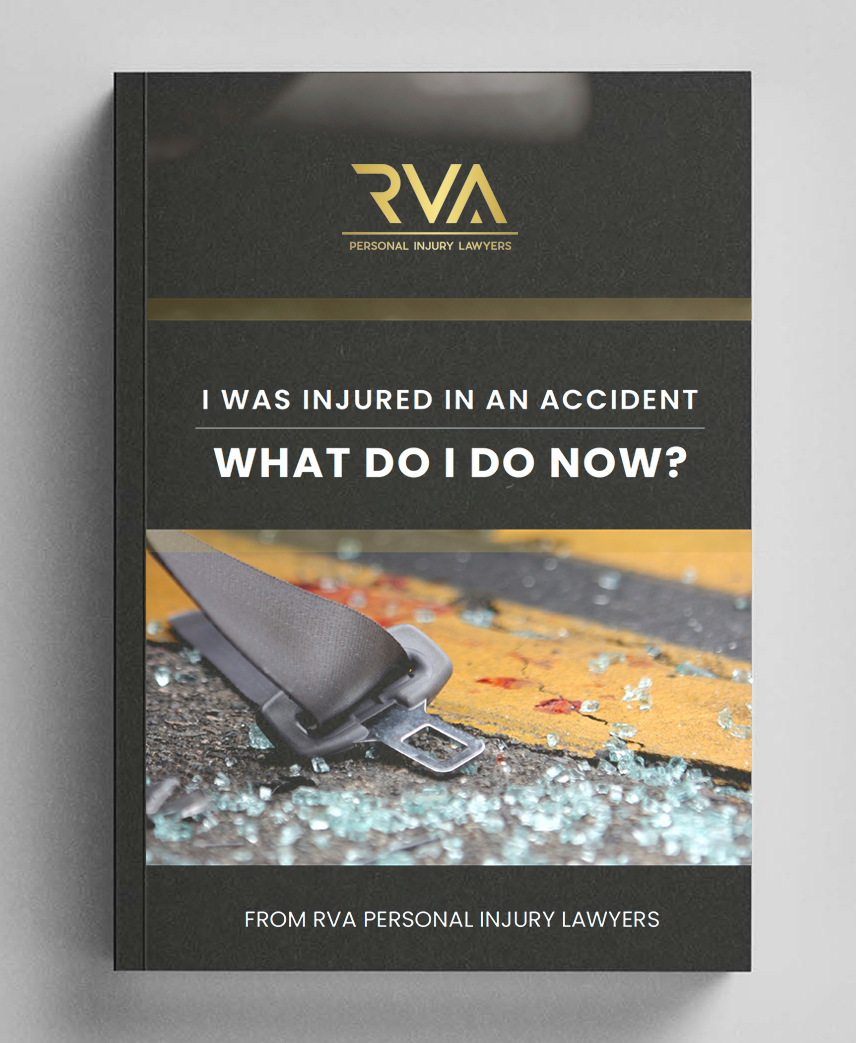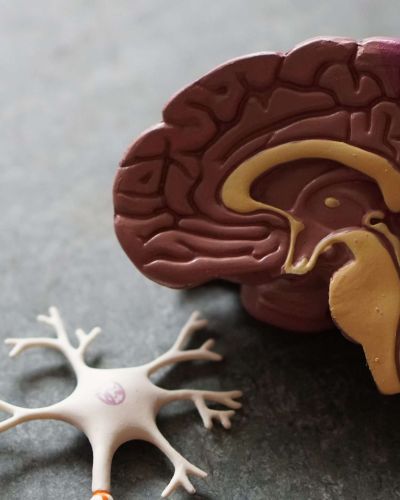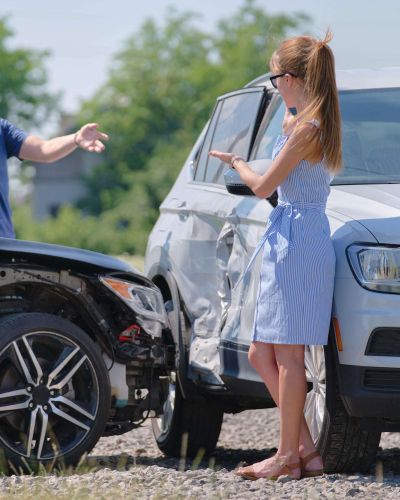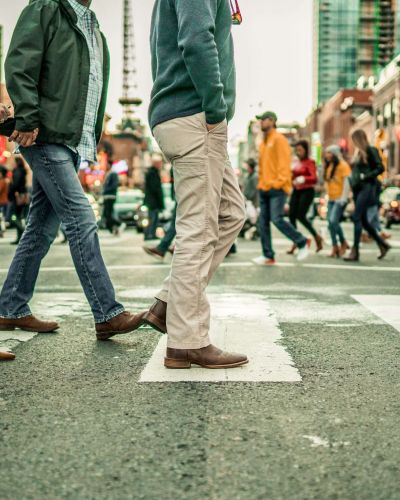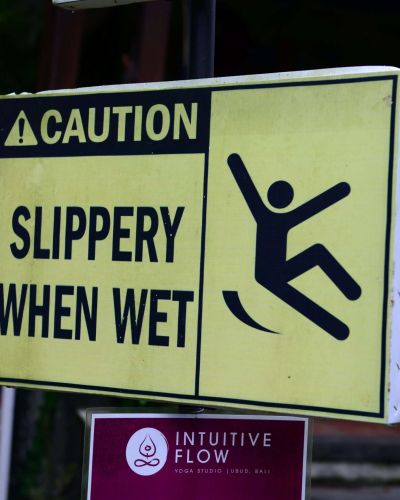Articles, Car Accidents
Top 10 Most Common Car Accident Injuries and How to Treat Them
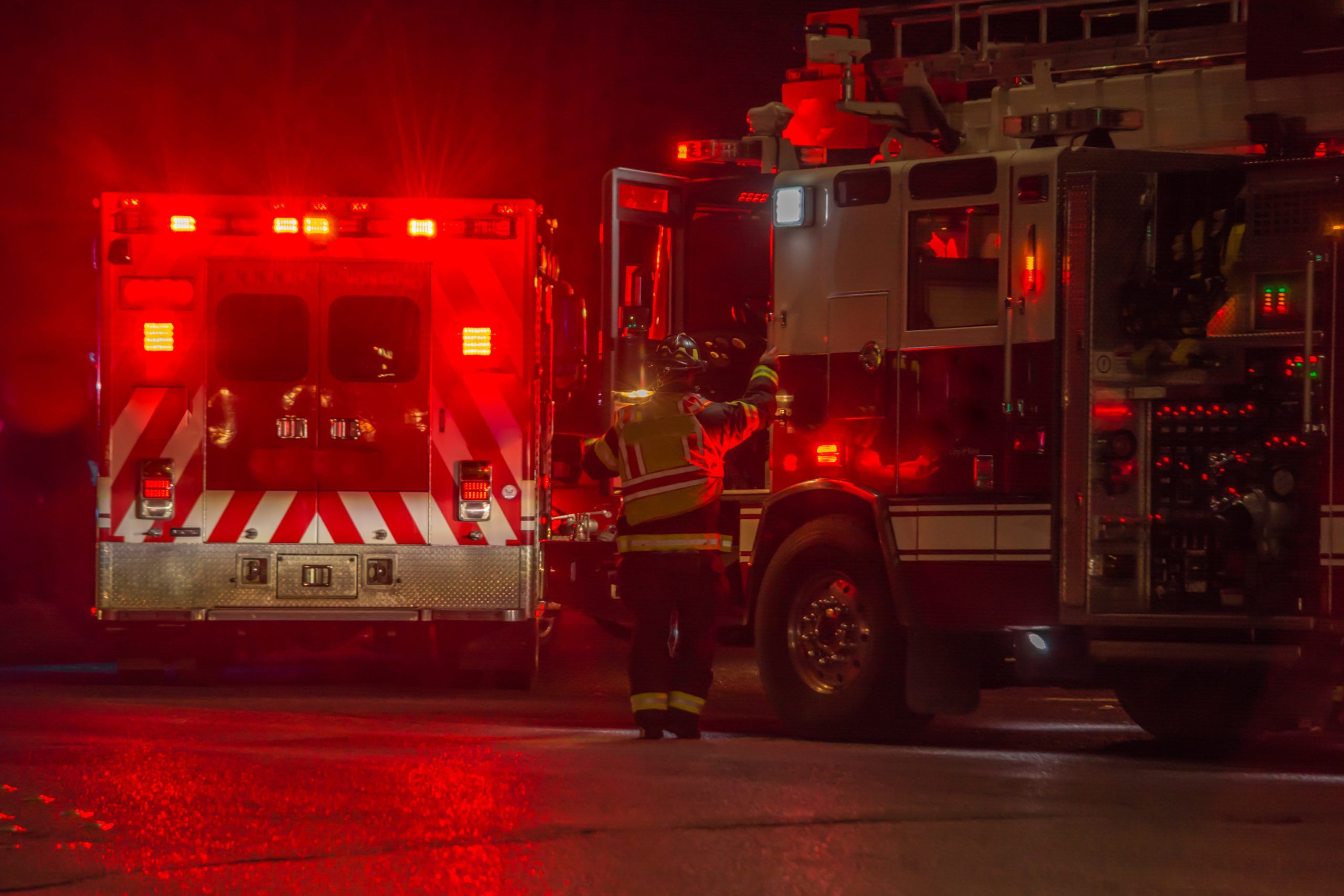
Car accidents can result in serious trauma. Immediate and long-term treatment is often needed. Here are the top 10 most common car accident injuries, symptoms, and treatment options.
If you have suffered car accident injuries because of someone else’s negligence, Sharif Gray at Broughton Injury Law can help. We have won millions of dollars in verdicts and settlements. Call Sharif at (804) 915-1611 or contact him online to schedule a free consultation. We will get justice for you.
Key Points
- Motor vehicle accidents can cause severe head, spine, neck, and limb injuries that require immediate medical attention to prevent long-term complications.
- Symptoms may not appear right away; get evaluated and follow up regularly for hidden injuries to ensure proper recovery.
- Psychological injuries like PTSD, anxiety, and depression are serious consequences of car accidents and need mental health support to address.
Table of Contents
ToggleHead and Brain Injuries
Head and brain injuries are among the most severe types of car accident injuries. The impact during a crash can cause the head to hit hard surfaces like the steering wheel or the window and result to head injury, traumatic brain injuries (TBIs) or concussions. These injuries can range from mild to life threatening and requires immediate medical attention to check for brain damage or bleeding.
Symptoms of head injuries can be deceptive and may appear hours or even days after the accident. Confusion, dizziness and loss of consciousness are red flags that should not be ignored. Get medical evaluation right away to avoid long term complications like cognitive deficits and personality changes. Post accident medical evaluation can prevent further complications.
Concussions
A concussion is a mild form of traumatic brain injury where the brain bounces, twists or stretches inside the skull. This movement causes chemical changes and temporary loss of brain function. Unlike broken bones, concussions can’t be seen on imaging, making it tricky to diagnose.
Symptoms like headaches, confusion, dizziness and fatigue may appear right away or be delayed. Monitor changes in learning, concentration, memory and problem solving abilities. Persistent headaches or new symptoms should prompt immediate consultation with your healthcare provider.
Traumatic Brain Injury (TBI)
Traumatic Brain Injuries (TBIs) are caused by severe impacts or penetrating injuries to the head. These are serious, almost a quarter of hospitalizations are due to car accidents. Symptoms can range from minor memory issues to severe disabilities depending on the injury’s severity and location. Immediate medical attention can prevent secondary damage and manage symptoms well. Treatment options for moderate to severe TBIs include medications, surgery and intensive rehabilitation. Recovery can be long and complex and often requires a multidisciplinary approach to address the various health issues that may arise.
Spinal Cord Injuries
Spinal cord injuries are another serious outcome of car accidents, often caused by rollover crashes or severe impacts. These can manifest as strains, sprains or fractures and can affect mobility and quality of life. Early detection and treatment of car accident injuries can greatly improve outcomes, especially when it comes to spine-related injuries. This early intervention helps prevent further damage and long-term complications.
Long term effects of spinal cord injuries can be profound and can lead to chronic pain, disability and need for ongoing medical care. Rehabilitation and physical therapy play a vital role in managing these injuries and improving the patient’s quality of life.
Types of Spinal Cord Injuries
Spinal cord injuries can be classified into complete and incomplete injuries. Complete spinal cord injury results to total loss of sensory and motor functions below the injury site while incomplete injury allows for some retained functions. These can result to specific types of paralysis: tetraplegia affects all limbs and the trunk while paraplegia affects the legs and lower body.
Symptoms like tingling and numbness may indicate nerve damage and requires immediate medical evaluation. Determining the type and extent of spinal cord injuries is important in developing a treatment plan.
Long-Term Effects
Long term effects of spinal cord injuries can be devastating and can alter motor and sensory functions depending on the injury’s location and severity. Many require long term management for complications like bowel and bladder control issues. Rehabilitation often involves managing pain, improving mobility and adapting to lifestyle changes.
There is no cure for spinal cord injuries so long term rehabilitation is necessary. This often involves surgeries, physical therapy and pain management to help patients regain as much independence as possible.
Neck and Back Injuries
Neck and back injuries are common car accident injuries, typically caused by the sudden jolt of impact. Whiplash, a neck injury caused by rapid back and forth movement, is common in rear-end collisions. Herniated discs are another common injury that can limit mobility and cause a lot of pain.
Diagnosing and treating these injuries early can prevent long-term complications. Delayed symptoms like pain and disability can appear days, weeks, or even months after the accident, highlighting the need for continuous monitoring and medical care.
Whiplash Injuries
Whiplash is one of the most frequently reported car accident injuries, particularly in rear-end collisions. Whiplash is a non-medical term that describes a range of injuries to the neck and head, including muscle strains, ligament sprains, and herniated discs. Whiplash injuries can be caused by the sudden and forceful back-and-forth movement of the neck, which can put strain on the muscles, ligaments, and tendons in the neck.
It’s the most common injury in car accidents, affecting approximately 120,000 people each year. Even at 15 mph, these injuries can occur and can cause neck pain, stiffness and loss of muscle control.
Symptoms may not appear immediately—they can take hours or even days to develop—and may include neck pain, stiffness, limited mobility, headaches, dizziness, and fatigue. In some cases, tingling, numbness, or weakness in the arms or hands may also occur.
Early medical evaluation is key, as untreated whiplash can lead to chronic pain and long-term issues. Treatment typically includes physical therapy, medication, and pain management. Depending on the severity, chiropractic care or massage therapy may also be recommended. With prompt care, mild cases may heal within days or weeks, but delaying treatment can lead to lasting complications.
Herniated Discs
Herniated discs is when the outer shell of the disc ruptures and the inner material escapes and can irritate nearby nerves. These can occur from minor collisions not just severe accidents. Herniated discs can occur even in low-speed collisions, making them deceptively common car accident injuries.
Treatment options include physical therapy and in some cases surgery to relieve pain and restore mobility.
Chest and Abdominal Injuries
Chest and abdominal injuries in car accidents can range from broken ribs to severe internal bleeding. These are serious and potentially fatal so immediate assessment and follow up care is crucial. Front seat passengers are more prone to severe chest injuries due to the impact of the steering wheel and seat belts.
Minor chest injuries should be evaluated by a medical professional to avoid overlooking any issues. Follow up care helps identify and address internal injuries or bleeding that may not be immediately apparent.
Broken Ribs
Broken ribs is a common outcome of chest injuries during car accidents, often caused by the impact of seat belts. Symptoms include sharp pain especially when breathing deeply, coughing or moving.
Treatment is usually rest and pain management, severe cases requires more intensive medical care.
Internal Bleeding
Internal bleeding is a serious condition often caused by blunt force trauma during car accidents. This type of injury can occur from crash forces or flying debris damaging organs within the abdominal, cranial and thoracic cavities. Signs of internal bleeding can be subtle and may not appear immediately so prompt medical assessment is important.
Symptoms like abdominal bruising, nausea and vomiting should prompt immediate hospital care. Treatment options include medications and surgeries, emergency medical treatment is necessary to diagnose and manage internal injuries.
Soft Tissue Injuries
Soft tissue injuries including bruises, strains and sprains are common types of car accident injuries. These can be painful and long lasting and can lead to chronic discomfort if not treated properly. Treatment varies from minor care by orthopedic generalists to specialized surgical intervention for severe cases.
About 50% of injuries presented at ERs are minor such as strains, sprains, tissue damage and bruises, all need timely medical evaluation. Timely treatment can prevent long term issues and full recovery.
Sprains and Strains
Sprains and strains are common types of soft tissue injury that can occur in car accidents. Sprains involve stretching or tearing of ligaments while strains refer to injury of muscles or tendons. Symptoms of sprains include swelling, bruising, and pain around the affected joint, while strains can cause muscle spasms, weakness, and swelling.
Treatment often involves rest, ice, compression, elevation (RICE), and physical therapy.
Bruises and Contusions
Bruises or contusions occurs when the body impacts an object or vice versa causing injury to the small blood vessels underneath the skin. A common cause of bruising in car accidents is the impact of the seat belt during a crash causing ruptured blood vessels and swelling. Monitoring bruises can reveal more serious injuries such as fractures or internal bleeding.
Most bruises from car accidents take one to two weeks to heal depending on the severity of the injury. A bruise can sometimes develop into a hematoma or contusion. This may indicate a more serious injury that needs medical attention.
Limb Injuries
Limb injuries are common car accident injuries, often from side impact of the vehicle. These can range from bruises and scrapes to severe injuries like fractures and amputations. Accurate diagnosis and treatment can prevent long term disability and full recovery.
Common injuries to limbs are:
- Strains and fractures to arms
- Strains and fractures to legs
- Strains and fractures to fingers
- Strains and fractures to toes
Knee injuries can be painful and may not always be immediately evident. These injuries often require immobilization, physical therapy and sometimes surgical intervention.
Fractures and Broken Bones
Fractures and broken bones are a common car accident injuries that can occur in car accidents. Fractures and broken bones can be caused by the sudden and forceful impact of the body during a car accident, which can put strain on the bones.
Symptoms of fractures and broken bones can include severe pain, swelling, and limited mobility, as well as deformity or abnormal alignment of the affected area. In some cases, fractures and broken bones can also cause numbness, tingling, or weakness in the affected area.
Treatment for fractures and broken bones typically includes immobilization, pain management, and medication. In some cases, surgery may be necessary to repair the fracture or broken bone. It’s essential to seek medical attention if you experience any symptoms of fractures or broken bones after a car accident, as untreated fractures and broken bones can lead to chronic pain and long-term disability.
Fractures and Broken Bones
Fractures and broken bones are common in car accidents affecting various parts of the body such as legs, ribs, arms, ankles, wrists and pelvis. Symptoms of fractures include severe pain, deformity, difficulty moving the limb and possible bone protrusion. Immediate medical attention is important as fractures may not be immediately detectable and symptoms may appear later.
Fracture treatment includes:
- Casting
- Reduction
- Fixation
- Surgery
The severity of fractures can range from simple breaks that requires a cast to complex fractures that requires surgical intervention. For some fractures such as distal radius fracture, surgery may be needed depending on the severity.
Amputations
The force of a car accident can cause loss of limb especially in severe accidents such as motorcycle or truck under-ride crashes. Severe injuries such as crush injuries or compromised blood flow can require limb amputation especially in a car crash.
Such traumatic outcome has permanent disabling effects and requires long term rehabilitation and lifestyle adaptation.
Facial Injuries
Facial injuries in car accidents can occur due to many factors. These include:
- Broken glass
- Steering wheel
- Dashboard
- Windshield
- Airbag
- Side window
- Car seat
- Hard surfaces
These injuries can range from minor cuts and bruises to severe injury and eye damage. The delicate structures involved can also affect the brain and sensory organs.
Some facial injuries can heal on its own without intervention. However, some may need surgical correction for proper healing. A thorough medical evaluation determines the extent of damage and treatment plan.
Lacerations and Scars
Car accidents can cause lacerations from various sources. These include broken glass, torn sheet metal and flying objects. Road rash is a common type of laceration. It occurs as an abrasion from friction when a person is dragged or skids on pavement.
These car accident injuries can lead to scarring, infection, and may need surgical repair.
Disfigurement
Permanent scarring or disfigurement from car accidents can cause long term mental and emotional challenges. Facial injuries can severely impact an individual’s self image and cause depression and anxiety. Disfigurement can result from various types of injuries including burns, cuts, dental damage and lacerations. Surgical correction may be needed to address disfiguring facial injuries, treatment includes facial reconstruction surgery, skin grafts and plastic surgery. These procedures can improve physical appearance and psychological well being.
Burns
Burns are a common type of injury that can occur in car accidents, particularly in accidents that involve fires or explosions. Burns can be caused by the sudden and intense heat generated by a fire or explosion, which can cause damage to the skin and underlying tissues.
Symptoms of burns can include severe pain, redness, swelling, and blistering, as well as charring or eschar formation. In some cases, burns can also cause numbness, tingling, or weakness in the affected area. Burns from fires or explosions are among the most painful car accident injuries.
Treatment for burns typically includes wound care, pain management, and medication. In some cases, surgery may be necessary to repair damaged skin and underlying tissues. It’s essential to seek medical attention if you experience any symptoms of burns after a car accident, as untreated burns can lead to infection, scarring, and long-term disability.
Psychological Injuries
Psychological injuries are a significant yet often ignored consequence of car accidents. Conditions like post-traumatic stress disorder (PTSD), anxiety and depression can affect individuals long after the physical injuries have healed. Facial injuries and spinal cord injuries can lead to deeper anxiety and depression.
Symptoms of psychological injuries may include irritability, difficulty thinking and memory problems that can interfere with daily life. Seeking mental health support is important for affected individuals to address challenges and overall well being.
Post-Traumatic Stress Disorder (PTSD)
Post-traumatic stress disorder or PTSD is a mental health condition. It often arises after a traumatic event such as a car accident. Symptoms include nightmares, flashbacks and severe anxiety related to the accident.
Therapy and mental health support helps individuals with PTSD cope with symptoms and improve quality of life.
Anxiety and Depression
Car accidents can cause anxiety and depression often triggered by traumatic experiences. Symptoms of PTSD related to car accidents include memories and dreams of the crash, flashbacks and avoidance of reminders.
Support from a mental health professional is essential in managing these emotional issues and overall mental health.
Hidden Injuries
Hidden injuries from car accidents can be just as dangerous as those that are immediately apparent. Not all car accident injuries are immediately apparent. Adrenaline can mask pain making it hard to recognize some injuries right after an accident. Seeking medical care within a specific time frame after the accident is important to qualify for recovery costs, example in Florida where care must be sought within 14 days.
Symptoms of internal bleeding, neck injuries and psychological effects may not appear until weeks or months after the incident. Regular follow up visits helps identify potential complications from hidden injuries. Attending scheduled medical appointments ensures proper recovery and documentation.
Delayed Symptoms
Common delayed symptoms after a car accident include headaches, neck pain and back pain. Various types of pain can occur after a motor vehicle accident, some are immediate while others can manifest later.
Monitoring for these delayed symptoms is important to ensure timely treatment and prevent complications.
Importance of Follow-Up Care
Follow up medical appointments after a car accident is important to catch and treat hidden injuries early. Immediate medical treatment helps address injuries that may worsen over time if not monitored. Doctors will run specific tests during follow up appointments to check for nerve damage and other complications.
What to Do Immediately After a Car Accident
After a car accident, you should assess injuries right away. If someone is hurt, call emergency services. Move to a safe location, especially if your vehicle is hazardous. Call the police, regardless of the severity of the accident.
Exchange insurance and contact details with the other driver is a must after the accident. Seek medical attention as soon as possible to identify injuries that may not be visible and prevent it from getting worse. Document injuries and treatment is important for legal and insurance purposes.
See a Doctor
Seeing a doctor after an accident is important to address and treat car accident injuries. Medical examination helps identify injuries that may not be visible, such as hairline fractures, traumatic stress reactions and whiplash, preventing it from getting worse. Initial shock from an accident can mask symptoms temporarily, leading to overlooking of severe injuries.
Document Injuries and Treatment
Keep a detailed record of injuries and medical care can be important for legal and insurance purposes after an accident. Detailed documentation of car accident injuries and treatments supports insurance claims and provides evidence.
Conclusion
Understanding the types of car accident injuries and their treatment is key to recovery. From head and brain injuries to soft tissue and psychological injuries, each needs specific attention and care. Immediate medical evaluation and continuous follow up is essential to prevent long term complications and full recovery.
Be proactive and informed and you will navigate the aftermath of a car accident better. Remember, your health and safety is always the top priority. Seek medical and psychological help when needed and stay informed about your recovery. Stay safe on the road and take care of yourself and your loved ones.
FAQs
What injury pays the most for a car accident?
Severe injuries such as spinal cord injuries, traumatic brain injuries and multiple fractures typically pays the most for a car accident because of the extensive medical treatment and pain and suffering.
What are the most common injuries in car accidents?
Head and brain injuries, spinal cord injuries and neck and back injuries are the most common injuries in car accidents. Be aware of these types of injuries to be safe on the road.
Why immediate medical attention is important after a car accident?
Immediate medical attention is important after a car accident to identify and treat hidden injuries, prevent complications and ensure full recovery. Delay can make a big difference in long term health.
What are the symptoms of concussion after a car accident?
Symptoms of concussion after a car accident includes headache, confusion, dizziness, fatigue and difficulty to learn and concentrate. See a doctor if you experience these symptoms.
How can psychological injuries manifest after a car accident?
Psychological injuries after a car accident can manifest as PTSD, anxiety, depression, irritability and cognitive impairments like memory problems. These symptoms affect daily living and overall mental health.

“We Get Justice For Injured People, and We Love What We Do”
Sharif Gray works as a trial lawyer at Broughton Injury Law. Sharif has proven that he can and will get results in court, and the insurance companies know that. If you have suffered injuries because of someone else’s negligence, we can help.
Sharif is committed to trying cases well. Because of that, he does not handle hundreds of cases at a time. He is selective in the cases he takes so he can get justice for the people he represents. In every case, he has three goals:
- Hold the responsible corporation or individual fully accountable.
- Make the community safer, so others are not also harmed.
- Compensation that recognizes the full and fair value of what was taken from your health and quality of life.
Sharif loves what he does, and he is proud of the positive impact he has had and will continue to have on the people he represents and the community he lives in.
If Sharif can be of help to you, please do not hesitate to call him at (804) 915-1611 or contact him online to schedule a free consultation. We will get justice for you.
$10,000,000
Defendant, while racing on a residential road, crashed into an oncoming driver causing catastrophic injuries.
$9,000,000
Defendant failed to properly secure a display at its store which led to it falling on a child causing life altering injuries.
$1,500,000
Defendant failed to keep the entrance of its store safe for the public causing significant injuries.

